This is Sean Guthrie’s account of his cruise which appeared the The Herald on July 20th 2014
THE value of much you take for granted or overlook can be driven home in the unlikeliest of circumstances, in this case a week among strangers on a converted rescue ship ploughing the seas around the Inner and Outer Hebrides.
Far from Scotland’s northwest coast, Sean Guthrie explores a maritime wonderland. Over the course of the trip – 314 nautical miles from Oban to St Kilda and back, via Mull, the Monach Islands, Taransay, Soay and Morvern – nature claims the No 1 spot, with human endeavour and fellowship close behind.
The natural world engulfs you on the ocean wave – both deep within the roiling mass on which you sail and above it. As Elizabeth G makes her way along the Sound of Mull after overnighting in Tobermory, a couple of hours into the day’s schedule, a school of dolphins appears out of nowhere and proceeds to chum along with us for 45 minutes, making the collective heart skip a few beats. Such is the creatures’ proximity, most of the party lean over the gunwales to inch even closer, an act that forces several to retire to their beds in the aftermath to doze off the consequent queasiness.
But the sea clasps many species to its bosom. One morning while anchored in Camas nan Gall, the east bay of Soay in the shadow of the Black Cuillin of Skye, our skipper Rob Barlow zips off in the dinghy with crew member Helen Ricketts, diving gear to the ready. Half an hour later he’s back on board the boat carrying a net plump with glistening scallops. Over the proceeding hours the scallops pop and fart in protest at their new environment on deck, yet none of us has an ethical fit when, later that day, they are expertly pan-fried by Rob’s chef Martin and served with lardons.
From the sea to the sky. The next day, en route to Oban from our final anchorage at Ardtornish Bay between Loch Aline and Loch Linnhe, Rob kills the engines to allow his passengers the best possible view of a sea eagle at the southernmost point of the Morvern peninsula. By this point we have seen enough birds to last a lifetime – guillemot, fulmar, gannet, great skua, black-backed gull, oystercatcher, lapwing, puffin, black-throated diver – yet when Andy Bennett, an owlish ex-supermarket manager turned tour guide, says he’s spotted an example of the UK’s largest bird of prey, we all hurry to the rear deck with binoculars at the ready. And there it is, its wingspan up to eight feet in width yet so distant as to be a lone speck atop a crag. We look, and look, and look, necks craned. Eventually it takes off, wheeling lazily perhaps 400 feet above us, a mote caught in the sunlight.
Yet the human marvels I witness, albeit less alien, are equally humbling. Chief among these are the travelogues of fellow passengers John and Heera Barton, long retired from remarkable careers in law and nursing respectively yet bristling with vigour and a yen for adventure. Despite surviving maritime chaos crossing the Drake Passage, which separates the tip of South America and Antarctica, and walking the 490-mile Camino de Santiago de Compostela in three weeks in their 60s, each carrying little more than one change of clothing, John and Heera are the embodiment of fearlessness in the face of encroaching age. You sense this cruise to St Kilda was deemed the soft option when they were planning their jaunts for 2014.
Other human enterprises that blow the mind are historic, and spark a flurry of further reading on my return home. It was on Soay that Gavin Maxwell gambled his fortune – and lost, as told in his first book, the disarmingly frank Harpoon At A Venture. Having bought the island in 1943, he was demobbed in 1944 and set about building a factory that would, he hoped, reap dividends from the various parts of the then-unprotected basking shark, particularly the oil of the liver. Thus began a series of ruinously expensive experiments, recruitment failures, administrative struggles and equipment blunders. Within four years he had lost a fortune.
After sailing across the Minch and down the west coast of Skye, past Moonen Bay where Maxwell had his first major success hunting the second-biggest fish in the world’s oceans, we go onshore to Soay, the air thick with midges, and make the short trek across the isthmus to the north harbour where the remains of the factory lie static and untended. Even under the gabbro scowl of the Cuillin, you can see why Maxwell lost both his heart and his savings to Soay.
On a further sojourn onshore the following morning, our party meets the niece of Tex Geddes, a colleague of Maxwell in the Special Forces who became his first employee at the factory and quite a character. “He could handle a boat well and had a keenness for adventure which appealed to me,” wrote Maxwell. “On the debit side were a violent temper and a periodic liking for drink.” Now 79, Geddes’s niece splits her time between Soay and Dingwall and is thrilled that visitors to the island have heard of her late uncle.
There are myriad other spectacles on the cruise – Hirta; the tranquillity and gin-clear waters of Taransay after a hellish six-hour journey back from St Kilda; ploughing along the Sounds of Harris, Barra, Rum and Mull – but while it’s possible to revisit places, you can’t revisit those evenings on board when the food is flavoursome and plentiful and the atmosphere rich with companionship and mirth. It’s an experience you can’t put a price on.
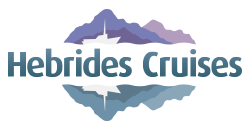
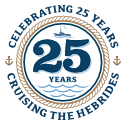







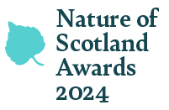
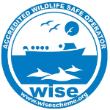

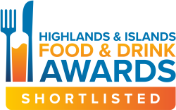

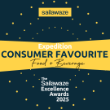
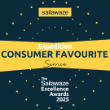







James experience ensured that despite poor weather sometimes we had a full intineray and safe anchorages. Dont hesiate! - Just do it you wont be disappointed!
Carol & Bill Martin: 20 May 2017Skye and the Small Isles: Hebridean horizons